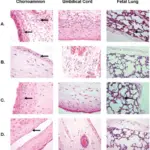Chlamydiae trachomatis is a sexually transmitted disease caused by bacteria called Chlamydia trachomati.
What is the Pathology of Chlamydiae Trachomatis?
The pathology of chlamydiae trachomatis is:
-Etiology: The cause of chlamydiae trachomatis is Chlamydia trachomatis bacteria.
-Genes involved: ompA.
-Pathogenesis: The sequence of events that lead to chlamydiae trachomatis are infectivity and organism exposure, survival inside host, virulence association, immunity, susceptibility of host to infection.
-Morphology: The morphology associated with chlamydiae trachomatis shows obligate intracellular parasites with elementary bodies and reticulate bodies.
-Histology: The histology associated with chlamydiae trachomatis shows lymphoid germinal centers, plasma cells, and reactive epithelial atypia.
How does Chlamydiae Trachomatis Present?
Patients with chlamydiae trachomatis typically are all genders at the age range of 15–24 years. The symptoms, features, and clinical findings associated with chlamydiae trachomatis include testicular pain, urethral discharge, and painful urination.
How is Chlamydiae Trachomatis Diagnosed?
Chlamydiae trachomatis is diagnosed by swab test and urine test.
How is Chlamydiae Trachomatis Treated?
Chlamydiae trachomatis is treated by antibiotics such as azithromycin, and doxycycline.
What is the Prognosis of Chlamydiae Trachomatis?
The prognosis of chlamydiae trachomatis is good. In women, untreated chlamydia can spread into the uterus or fallopian tubes and cause pelvic inflammatory disease.



